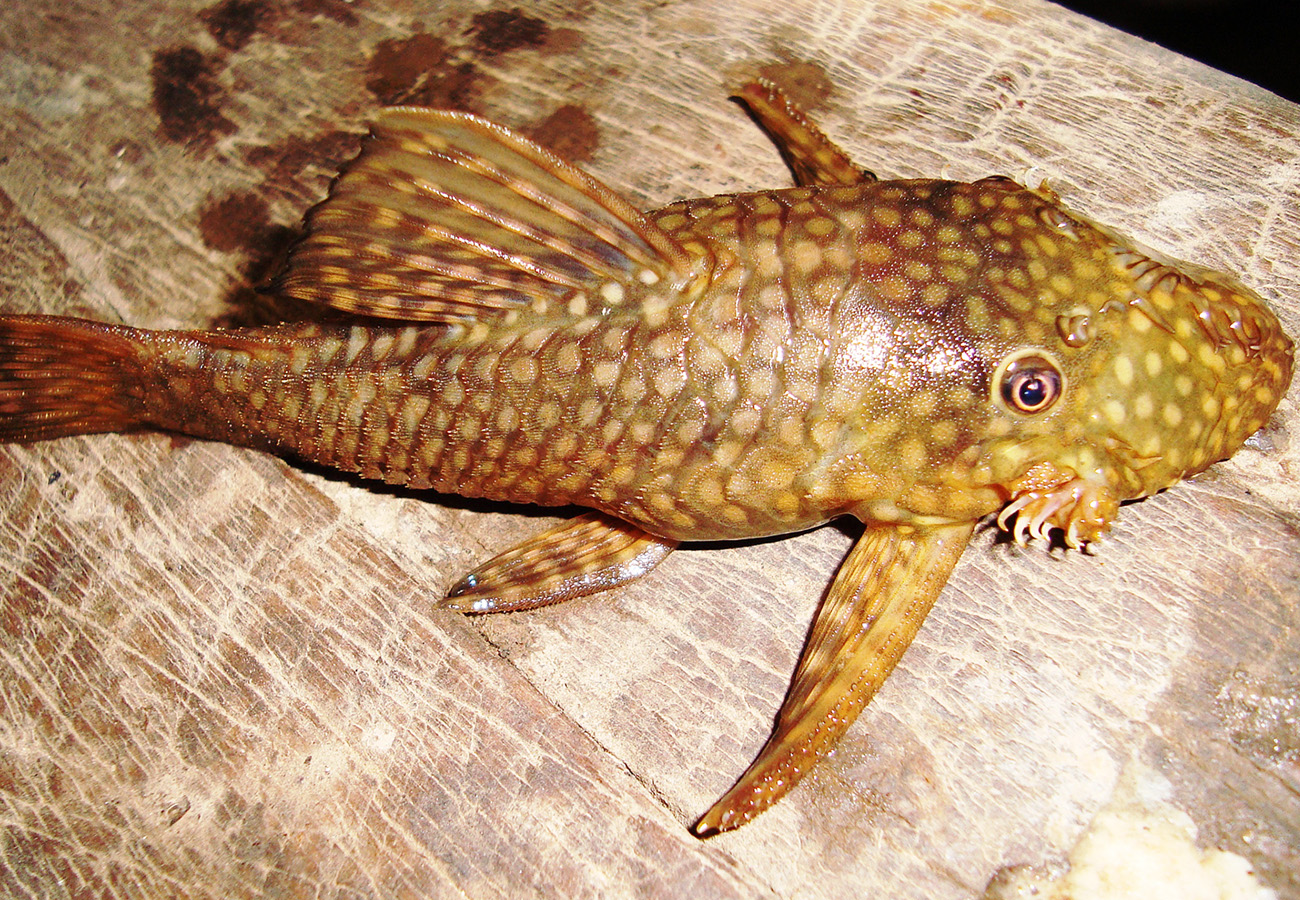Abstract
A third species of Brasilotyphlus, a siphonopid caecilian, is described based on six specimens from two twin mountains in Roraima state, northern Brazil. Brasilotyphlus dubium sp. nov. differs from all other congeners in having a combination of 123–129 primary annuli and 9–16 secondary annular grooves. The first molecular data were generated and analyzed for Brasilotyphlus, and the genus was recovered as monophyletic and nested within a paraphyletic Microcaecilia. The extent of genetic and taxonomic sampling, and moderate phylogenetic support are not considered sufficient enough to place Brasilotyphlus in the synonymy of Microcaecilia.
References
Donneley, M.A. & Wake, M.H. (2013) A new species of Microcaecilia (Amphibia: Gymnophiona) from Guyana, with comments on Epicrionops niger. Copeia, 2013, 223–231.
https://doi.org/10.1643/ch-12-094Duméril, A.H.A. (1863) Catalogue méthodique de la collection des batraciens du Muséum d’Histoire Naturelle de Paris. Mémoires de la Société Impériale des Sciences Naturelles de Cherbourg, 9, 295–321.
Dunn, E.R. (1945) A new caecilian of the genus Gymnopis from Brazil. American Museum Novitates, 1278, 1.
Fetzner, J. (1999) Extracting high-quality DNA from shed reptile skins: a simplified method. Biotechniques, 26 (6), 1052–1054.
https://doi.org/10.2144/99266bm09Hall, T.A. (1999) Bioedit: a user-friendly biological sequence alignment editor and analysis program for Windows 95/98/NT. Nucleic Acids Symposium Series, 41 (41), 95–98.
Huelsenbeck, J.P. & Ronquist, F. (2001) MRBAYES: Bayesian inference of phylogenetic trees. Bioinformatics, 17 (8), 754–755.
https://doi.org/10.1093/bioinformatics/17.8.754Kamei, R.G., Wilkinson, M., Gower, D.J. & Biju, S.D. (2009). Three new species of striped Ichthyophis (Amphibia: Gymnophiona: Ichthyophiidae) from the northeast Indian states of Manipur and Nagaland. Zootaxa, 2267 (1), 26–42.
https://doi.org/10.11646/zootaxa.2267.1.2Lütken, C.F. (1851) Siphops brasiliensis, an ny Art af Ormpaddernes (Caeciliernes) Familie. Videnskabelige Meddelelser fra Dansk Naturhistorisk Forening i Kjøbenhavn, 1851, 52–54.
Maciel, A.O. & Hoogmoed, M.S. (2011) Taxonomy and distribution of caecilian amphibians (Gymnophiona) of Brazilian Amazonia, with a key to their identification. Zootaxa, 2984 (1), 1–53.
Maciel, A.O., Mott, T. & Hoogmoed, M.S. (2009) A second species of Brasilotyphlus (Amphibia: Gymnophiona: Caeciliidae) from Brazilian Amazonia. Zootaxa, 2226, 19–27.
Mikan, J.C. (1820) Delectus Florae et Faunae Brasiliensis. Vindobonae: Antonii Strauss, 50 pp, 24 tabs.
https://doi.org/10.5962/bhl.title.63994Rodrigues, M.T., Azevedo-Ramos, C. & Wilkinson, M. (2004) Brasilotyphlus braziliensis. The IUCN Red List of Threatened Species, 2004, e.T59500A11949756. Available from: https://doi.org/10.2305/IUCN.UK.2004.RLTS.T59500A11949756.en (accessed 6 August 2017)
Miller, M.A., Pfeiffer, W. & Schwartz, T. (2010) Creating the CIPRES Science Gateway for inference of large phylogenetic trees. In: Gateway Computing Environments Workshop (GCE), 14 Nov. 2010, New Orleans, LA, pp. 1–8.
https://doi.org/10.1109/GCE.2010.5676129Palumbi S.R., Martin, A.P., Romano, S., McMillan, W.O., Stice, L. & Grabowski, G. (1991) The simple fool’s guide to PCR. Special publication, Department of Zoology, University of Hawaii, Honolulu, 44 pp.
Posada, D. (2008) jModelTest: phylogenetic model averaging. Molecular Biology and Evolution, 25 (7), 1253–1256.
https://doi.org/10.1093/molbev/msn083Rambaut, A., Suchard, M., Xie, W. & Drummond, A. (2014) Tracer. Version 1.6. Institute of Evolutionary Biology, University of Edinburgh. Available from: http://tree.bio.ed.ac.uk/software/tracer/ (accessed 20 August 2017)
Ronquist, F., Huelsenbeck, J.P. & Teslenko, M. (2011) MrBayes. Version 3.2 Manual: Tutorials and Model Summaries. Available from: http://mrbayes.sourceforge.net/mb3.2_manual.pdf (accessed 22 July 2017)
San Mauro, D., Gower, D.J., Oommen, O.V., Wilkinson, M. & Zardoya, R. (2004) Phylogeny of caecilian amphibians (Gymnophiona) based on complete mitochondrial genomes and nuclear RAG1. Molecular Phylogenetics and Evolution, 33 (2), 413–427.
https://doi.org/10.1016/j.ympev.2004.05.014Shimodaira, H. (2002) An approximately unbiased test of phylogenetic tree selection. Systematic Biology, 51 (3), 492–508.
https://doi.org/10.1080/10635150290069913Stamatakis, A. (2014) RAxML version 8: a tool for phylogenetic analysis and post-analysis of large phylogenies. Bioinformatics, 30 (9), 1312–1313.
https://doi.org/10.1093/bioinformatics/btu033Stamatakis, A., Hoover, P. & Rougemount, J. (2008) A rapid bootstrap algorithm for the RAxML web servers. Systematic Biology, 57 (5), 758–771.
https://doi.org/10.1080/10635150802429642Swofford, D.L. (2003) PAUP*: phylogenetic analysis using parsimony. Version 4.0 b10. Sunderland, Sinauer Associates, MA.
Taylor, E.H. (1968) The Caecilians of the World: A Taxonomic Review. University of Kansas Press, Lawrence, 848 pp.
Wilkinson, M. & Nussbaum, R.A. (2006) Caecilian phylogeny and classification. In: Exbrayat, J.M. (Ed.), Reproductive Biology and phylogeny of Gymnophiona (caecilians). Science Publisher Inc., Enfield, pp. 39–78.
Wilkinson, M., O'Connor, A. & Nussbaum, R.A. (2013) Taxonomic status of the neotropical caecilian genera Brasilotyphlus Taylor, 1968, Microcaecilia Taylor, 1968 and Parvicaecilia Taylor, 1968 (Amphibia: Gymnophiona: Siphonopidae). Occasional Papers of the Museum of Zoology, University of Michigan, 744, 1–12.
Wilkinson, M., Sherratt, E., Starace, F. & Gower, D.J. (2013) A new species of skin-feeding caecilian and the first report of reproductive mode in Microcaecilia (Amphibia: Gymnophiona: Siphonopidae). PLoS ONE, 8, e57756.
https://doi.org/10.1371/journal.pone.0057756Wilkinson, M., San Mauro, D., Sherratt, E. & Gower, D.J. (2011) A nine-family classification of caecilians (Amphibia: Gymnophiona). Zootaxa, 2874, 41–64.

